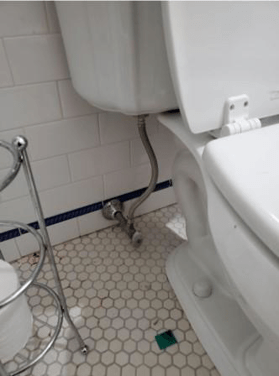Are you on the lookout for content around Looking for Signs of Water Damage in the Bathroom?

The shower room is very susceptible for moist accumulation and also possible water damages because of the frequent use water in it. This post uses easy inspection strategies to assist spotting water damage threats.
The regular use of water in the bathroom makes it exceptionally prone for moist buildup and also prospective water damage. By evaluating it routinely, you can lower water associated damages.
The adhering to set of assessments is easy to execute as well as should be done as soon as in every three months in order to maintain your shower room in good shape and also to avoid potential water problems caused by the bath tub, the shower, pipe joints as well as plumbing, sinks, cabinets, and also the bathroom
Do not forget doing these inspections as well as be comprehensive while executing them. Bear in mind that these straightforward assessments can save you a great deal of money by supplying early indicators for water damages
Sinks as well as Cabinets
Sinks and also cupboards are revealed to wetness and also humidity day-to-day and are commonly overlooked. Check routinely under the sink as well as on the countertop above it. Fix any drip in the catch as it might suggest drainpipe problems. Browse the sink, slow-moving draining pipes might indicate a blocked drainpipe. Replace sink seals if they are broken or loosened.
Bathtub as well as Shower
The shower and also bathtub need unique attention as well as upkeep. Check the ceramic tiles and also change if broken. Make certain that there is no missing out on grout between the floor tiles. Inspect as well as change fractured caulking at joints where the walls satisfy the flooring or the bath tub. Clogged drains as well as pipelines problems will stop the bath tub from drying and may suggest significant problems below the tub. Talk to a specialist immediately to avoid architectural damages. Take notice of discolorations or soft areas around the bathtub walls as they might suggest an inner leakage.
Plumbing
Signs for water damages are hard to spot because a lot of pipelines are mounted inside the wall surfaces.
Pay unique focus to flooring and walls moisture and spots as they may suggest an undetectable plumbing issue. Examine dampness degrees in adjacent areas too.
The Commode
The commode is an at risk water joint. Inspect the water lines as well as look for leakages around the bathroom seat, in the pipe, as well as under the water storage tank. If you discover any type of signs of moisture on the flooring around the commode, look for leakages in the toilet edge as well as storage tank seals.
Know that hanging bathroom bowl deodorants increases the chances for clogs.
10 TIPS TO PREVENT WATER DAMAGE IN THE BATHROOM
The average household uses approximately 80-100 gallons of water per person per day. For a family of 4, that's almost 2,500 gallons of water a week! The largest portion of this consumption comes from bathroom use. Flushing the toilet uses the most water, followed by taking a shower or bath. With that much water running through the home, water damage in the bathroom is bound to happen. Knowing how to spot signs of a water leak is essential to preventing long-term damage. This guide provides you with tips to reduce the impact of water damage on your bathroom.
CAUSES OF BATHROOM WATER DAMAGE
Pipe breaks are the most common cause of water damage we see in our daily jobs. The age of a pipe plays a large role in a pipe break as well as corrosion. Over time, the metal begins to break down, allowing water to escape. Frozen pipe breaks are also a concern in the winter months. Toilet overflows caused by paper products or children flushing inappropriate items. Degraded caulking around the toilet or bathtub can allow water seepage, sometimes behind the fixture, into the subfloor or walls. Condensation forms when the water in a pipe is cooler than the air temperature. Beads of water form on the exterior of the pipes, sometimes so much so that the water begins to drip and pool below. Sink or shower backups created by poor drainage. HOW TO PREVENT WATER DAMAGE IN YOUR BATHROOM
Inspect your toilet supply line for worn or frayed hoses and replace them as needed. Winterize your plumbing to prevent a frozen pipe break. Use vent fans to prevent condensation that can lead to mold growth. Routinely check and replace degraded caulking around your toilet or bathtub. Increase the temperature in your toilet tank and insulate your pipes during the warm summer months to keep condensation from forming. Use child safety locks on the toilets. Flush only toilet paper. "Flushable" wet wipes are actually not good for your plumbing system. Additionally, feminine hygiene products should not be flushed. Prevent water from escaping the tub or shower. Make sure shower curtains are in good condition. Inspect shower doors and replace the seal strip if necessary. Wipe up any water that accumulates on the floor and use bath mats. Water left to sit can cause damage to the tiles and flooring. Refrain from using bath products containing heavy oils to avoid a clogged drain.

We were shown that write-up about How to Fix a Water Damage Bathroom from a good friend on our other website. Remember to set aside a second to distribute this article if you enjoyed it. Thanks a lot for your time. Visit us again soon.
Book Your Service